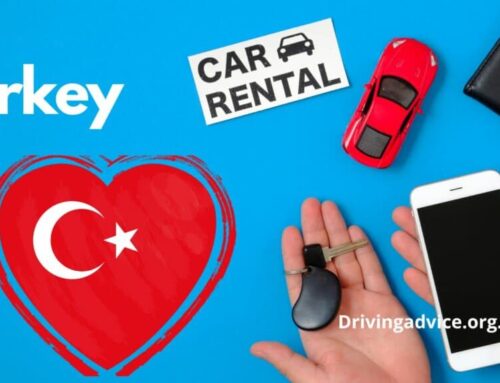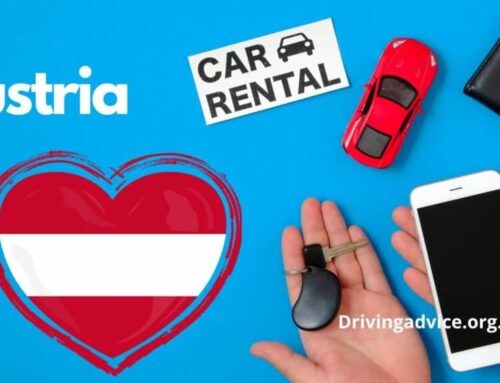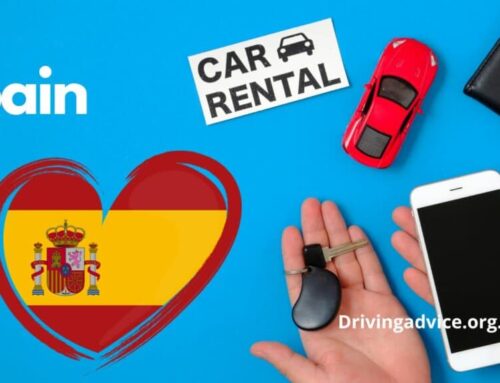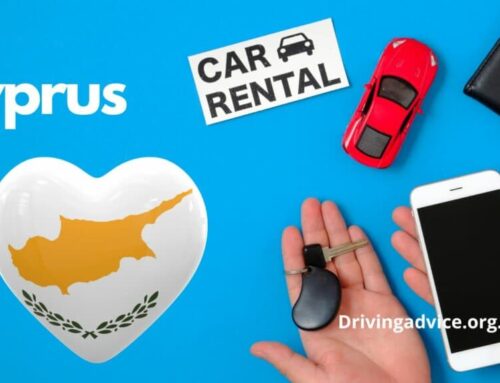Navigating the vibrant and bustling streets of Taiwan becomes a seamless experience with the convenience of a rental car, offering both visitors and locals alike the freedom to explore the island’s diverse landscapes and cultural attractions at their own pace. In Taiwan, approximately 30% of tourists opt for car rentals, a testament to the value they find in the flexibility and autonomy that having a private car brings to their travel experience. With a well-maintained network of roads complementing its scenic beauty, Taiwan is a country that rewards those who venture beyond the urban centers. Renting a vehicle provides an accessible solution for those looking to delve deeper into the country’s enchanting mountainous terrains, traditional villages, and stunning coastlines, all of which are less commonly reached by the island’s public transport system.
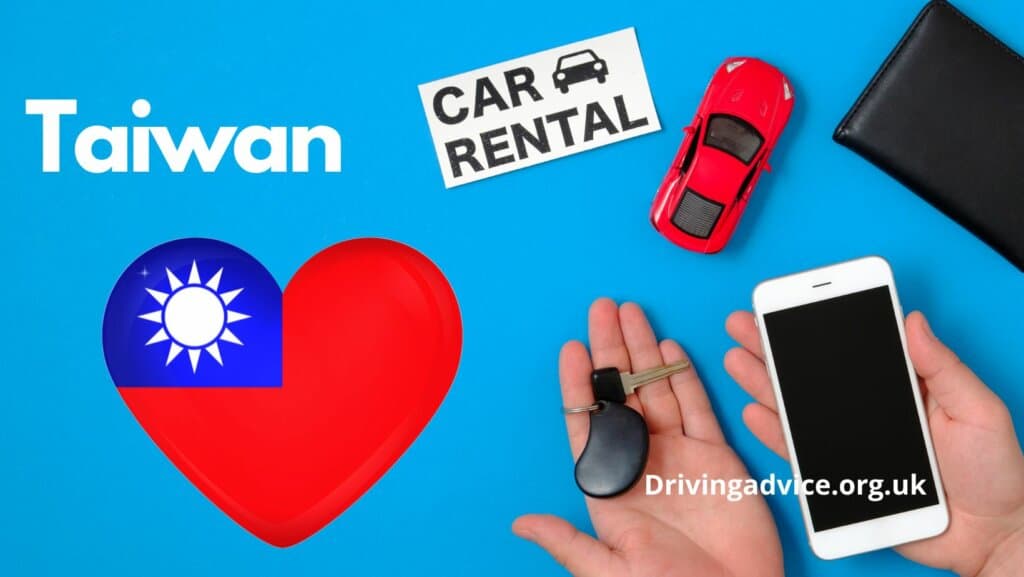
Why Rent a Car in Taiwan?
From my personal experience exploring the diverse terrains of Taiwan, renting a car can immensely enhance your travel experience in this captivating country. The freedom of having your own vehicle allows you to escape the constraints of public transport schedules, giving you the flexibility to explore the hidden gems of Taiwan’s countryside, coastal roads, and stunning mountain ranges at your own pace. Moreover, it facilitates impromptu stops at local markets, secluded beaches, or cultural sites, that you might otherwise miss. As we delve deeper into the specifics, you’ll learn about the practicalities of car rental in Taiwan, such as licensing requirements, driving etiquette, and the best places worth the drive.
What Size Rental Car: Big or Small?
During my numerous visits to Taiwan, I have had the experience of renting both big and small cars. Choosing the right size rental car can significantly affect your travel experience. Below, I’ll delve into the reasons for selecting either a big or small vehicle to help you make an informed decision.
Reasons for Choosing a Big Rental Car
One of the primary reasons you might opt for a larger rental car is space. If you’re traveling with family or a group, a big car will comfortably accommodate everyone along with your luggage. Moreover, Taiwan offers some breathtaking views along the coast and through mountainous regions; a bigger car provides a more comfortable ride over long distances, ensuring that all passengers enjoy the journey without feeling cramped.
Additionally, if your trip includes outdoor activities that require gear, such as camping or surfing, a larger vehicle will have the necessary room for your equipment. It’s also worth noting that big cars often come with more powerful engines, making them better suited for navigating the island’s varying terrains, from steep inclines to windy roads.
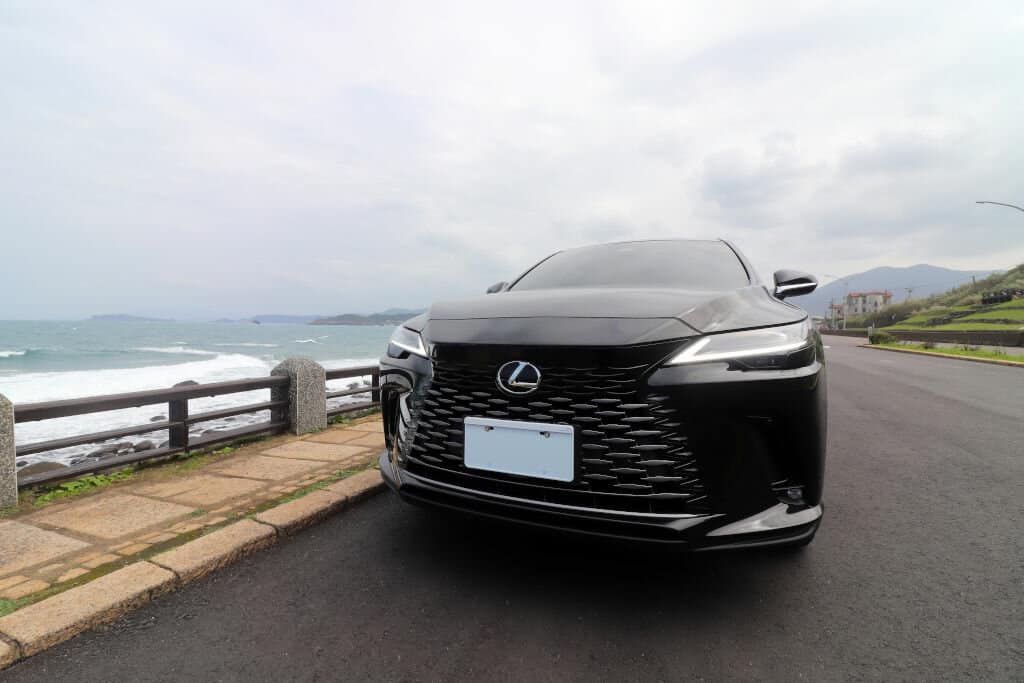
Reasons for Choosing a Small Rental Car
On the other hand, small rental cars have their own advantages. Primarily, they are generally more fuel-efficient, which can be a significant factor given the cost of petrol. A smaller car can mean less money spent on gas and more on enjoying what Taiwan has to offer.
In addition to being cost-effective, small cars are ideal for navigating Taiwan’s urban areas. Streets in cities like Taipei can be narrow and parking spaces are limited. A compact car is much easier to handle in tight spaces and can be a blessing when looking for parking in busy districts. Additionally, with Taiwan’s well-established public transportation system, you might find yourself only using the car for shorter trips, making a compact option even more practical.
Small cars also often offer an ease of driving that you might not find in a bigger model. They’re typically more nimble and responsive, which can be particularly advantageous on the winding and bustling streets found throughout Taiwanese cities. So, if your trip will mostly center around urban areas, a small car might be the best choice for you.
Ultimately, the choice between a big and small rental car depends on the specifics of your travel itinerary and personal preferences. Each has its own set of benefits, and considering factors like group size, travel distance, and where you’ll be driving can help guide your decision to ensure you have the best travel experience in Taiwan.
Picking up your Rental Car
In my extensive travels through Taiwan, I’ve had the opportunity to rent cars from various locations, ensuring a smooth transition from the plane to the open road. Here are some of the places where I’ve picked up rental vehicles:
Major Airports
Most of my car rental experiences have begun straight upon arrival at Taiwan’s major airports. For instance:
- Taoyuan International Airport (TPE): As the largest airport in Taiwan, I found it incredibly convenient to pick up my rental car here. The rental desks are nestled comfortably inside the terminal, just a short walk from the baggage claim area.
- Kaohsiung International Airport (KHH): On the southern side of the island, this airport also offers various rental options. Once again, the rental desks are conveniently located within the airport, making the pickup process seamless.
Vibrant Cities
Aside from airports, I’ve also rented cars directly within some of Taiwan’s most bustling cities:
- Taipei City: In the heart of the capital, rental agencies are dotted throughout the city. Some are close to major train stations, which allows for an easy change of transportation mode.
- Taichung: This city is a central hub that connects many parts of the island, and I’ve found several rental car offices near the main bus and high-speed train stations.
At each of these locations, I was greeted by friendly staff. Most of them spoke English well, which helped alleviate any concerns I had about communication barriers. They were eager to ensure my rental experience started on the right foot, highlighting points of interest and offering guidance for local driving customs.
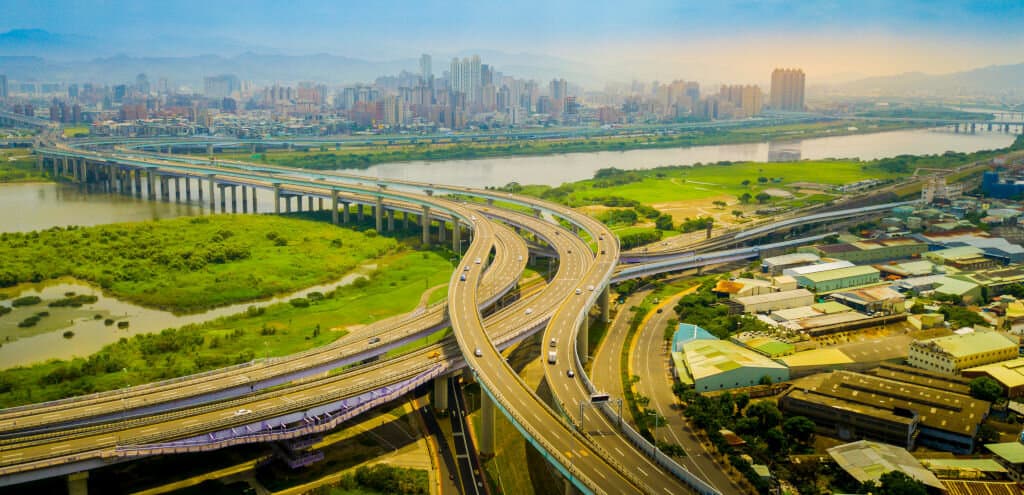
When renting in Taiwan, always remember to bring along your driving license and an International Driving Permit if your license isn’t in English. This is essential for a smooth pickup process. As you arrange your rental car in Taiwan, rest assured that the convenience of in-airport rental desks and the helpful nature of the staff will make picking up your rental car a hassle-free part of your travel experience.
Insurance, Excesses and CDW
When planning a self-drive trip to Taiwan, understanding the country’s rental car insurance framework is crucial. The legal requirements for rental car insurance in Taiwan may vary slightly depending on the rental agency, but a basic level of liability insurance is mandatory. Additionally, there are several insurance options that you should consider to ensure your peace of mind while navigating the roads of this vibrant island.
Legal Requirements and Insurance Options
In Taiwan, the car rental rate typically includes third-party liability insurance, which covers damage to other vehicles, property, and injuries to other people in the event of an accident. However, it’s essential to confirm the coverage limits and whether additional coverage is necessary.
For added protection, renters often opt for additional coverages such as Collision Damage Waiver (CDW), Theft Protection, and Personal Accident Insurance. The Taiwan Tourism Bureau or rental car agencies’ websites usually provide detailed information on these options.
Understanding Excesses
An excess, also known as a deductible, is the amount you are responsible for paying towards repair costs if the rental car is damaged or stolen. In the case of an accident, the excess is the maximum amount you will be liable to cover. Rental car companies may offer the option to reduce or eliminate this excess for an additional daily fee.
Importance of Collision Damage Waiver (CDW)
Collision Damage Waiver (CDW) limits the driver’s financial responsibility in case of damage to the rental car. While CDW isn’t insurance, it can significantly lower the cost if the car is damaged. Some credit cards offer CDW coverage when you use the card to pay for the rental, which could save you money. However, it is vital to research beforehand, as credit card coverage may not meet Taiwan’s specific rental car insurance requirements. Always check with your credit card provider for details about international rental car coverage.
Opting for Full Coverage
There are several practical reasons why you might want to opt for full coverage of your excess. First, it grants you peace of mind, knowing that in an unfamiliar driving environment, you’re better protected against financial loss from damages or theft. Second, it simplifies the process in the event of an accident, as you won’t be faced with the immediate concern of covering a substantial excess payment.
Reading the Fine Print
Before signing a rental agreement, it’s crucial to read the fine print. Different rental agencies might have varying policies on what is included or excluded from their insurance coverage. Moreover, some parts of the vehicle, like tires, windows, undercarriage, and roof, may not be covered by the standard insurance; these details are often found in the rental agreement.
Visitors should thoroughly comprehend what their responsibilities are and what situations may void the insurance coverage. For example, driving under the influence or driving on unsealed roads might negate the insurance policy, leaving you fully liable for any damages.
For comprehensive and up-to-date information on driving in Taiwan, always refer to official resources such as the Taiwan Ministry of Transportation and Communications. They can provide guidance on legal requirements and may offer further advice on rental car insurance options in Taiwan.
Renting Eligibility in Taiwan
When visiting Taiwan, the legal driving age is set at 18 years old, which allows young adults to legally operate a vehicle on the road. However, when it comes to renting a car, the criteria is slightly stricter. Typically, car rental companies in Taiwan require drivers to be at least 20 to 21 years old, although this may vary depending on the rental service provider.
Age Restrictions for Car Rentals
The difference in age requirement is often due to the rental companies’ insurance policies and risk assessments. Renters under a certain age may also face additional fees or need to provide extra documentation. It’s imperative to check the specific requirements of the rental company you intend to use before making a reservation.
To assist you in understanding the various requirements and preparing for your car rental in Taiwan, it’s advisable to visit the Taiwan Ministry of Transportation and Communications, which provides valuable information for foreign drivers. Furthermore, the Institute of Transportation of the Ministry of Transportation and Communications can offer detailed guidelines for international drivers and related rules.
International Driving Permits and Local Regulations
Aside from age considerations, international visitors must also hold a valid International Driving Permit (IDP) alongside their native driver’s license to legally drive or rent a car. This permit should comply with the Vienna Convention on Road Traffic, which is recognized in Taiwan. The process of applying for an IDP in your home country is typically straightforward, but requirements may differ depending on your nationality.
For more information about obtaining an International Driving Permit, consult with the nearest Taiwanese embassy or consulate before leaving your home country. They can offer up-to-date advice and steps on the correct procedures to follow to ensure a smooth car rental experience in Taiwan.
When planning a trip that involves renting a car in Taiwan, keep in mind these eligibility criteria and the need for an International Driving Permit. By understanding and preparing for these requirements in advance, you can expect a more enjoyable and hassle-free travel experience exploring the scenic beauty of Taiwan by car.
Documentation Needed to Rent a Car
When renting a car in Taiwan, preparing the required documentation ahead of time is crucial for a smooth process at the rental desk. Here’s what you’ll need:
Valid Driver’s License
You must have a valid driver’s license from your home country. Ensure that it is not expired and has your photograph on it. This serves as your primary identification document and proof that you are legally authorized to drive.
International Driving Permit (IDP)
An International Drivers License, more commonly referred to as an International Driving Permit (IDP), is a translation of your national driving license that allows you to drive a vehicle in another country. It is required for those who have a driver’s license that is not in the English language or is not issued by a country that has a reciprocal driving agreement with Taiwan.
Travelers from the United States, Canada, the United Kingdom, Australia, and EU countries, among others, will need to obtain an IDP. You can apply for one through your home country’s automobile association before your trip. Consult the Taiwan government’s official website or the Ministry of Transportation and Communications for a current list of countries whose residents require an IDP.
Passport
Your passport is required as a form of identification and to verify international eligibility. Rental agencies will often ask for your passport to ensure that it matches the information on your driver’s license and IDP.
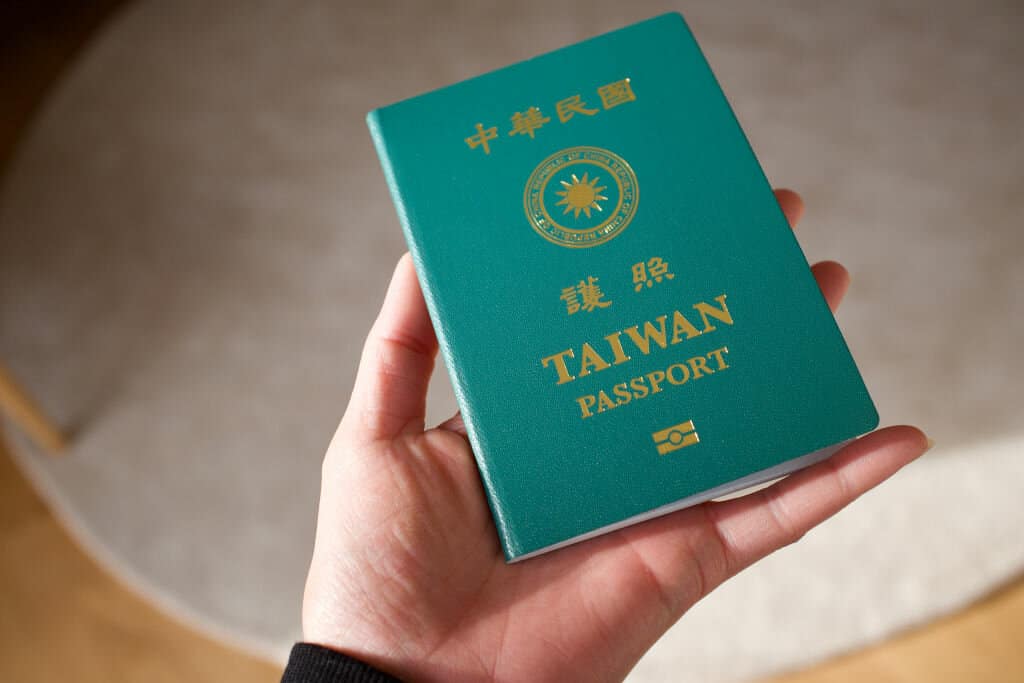
Credit Card
A credit card is usually requested for a security deposit. The rental agency will put a hold on a certain amount as a deposit, and the amount will vary depending on the agency’s policy.
Having these documents in order will help ensure that your car rental experience in Taiwan is hassle-free. Make sure to double-check their validity before you travel, and keep them safe and accessible for when you approach the rental desk.
Where do I Rent a Car in Taiwan?
Taiwan offers a variety of options for car rentals, catering to the needs of visitors who prefer to explore the country at their own pace. When it comes to renting a car, you can choose from several locations, namely airports, train stations, and city centers. Each location has a plethora of companies offering car rental services, and you may weigh your options based on convenience, service, and price.
At the Airport
Upon arrival in Taiwan, the most convenient option to rent a car is directly at the airport. Taiwan’s major airports like Taoyuan International Airport and Kaohsiung International Airport have car rental counters within the terminal. International brands such as Hertz, Avis, and Budget have a presence here, as well as local companies like Taiwan Car Rental. Airport rentals are great for their convenience and the variety of vehicles offered, but can be slightly more expensive than other locations.
At Train Stations
Major train stations such as those in Taipei, Taichung, and Tainan also offer car rental services. Companies like Hotai Leasing Corporation (affiliated with Toyota) allow travelers to pick up a rental car upon disembarking their train, making it a hassle-free transition to road travel. Prices at train stations may be more competitive, and the convenience for those already traveling by rail is unparalleled.
In City Centres
If you are already settled in your accommodation, renting from a city center location may be more suitable. Here, you’ll find many local rental agencies that might offer lower rates. One prominent local agency is Chailease, which boasts a comprehensive coverage across Taiwan. However, navigating through city traffic right after picking up your car can be daunting if you’re not familiar with the area.
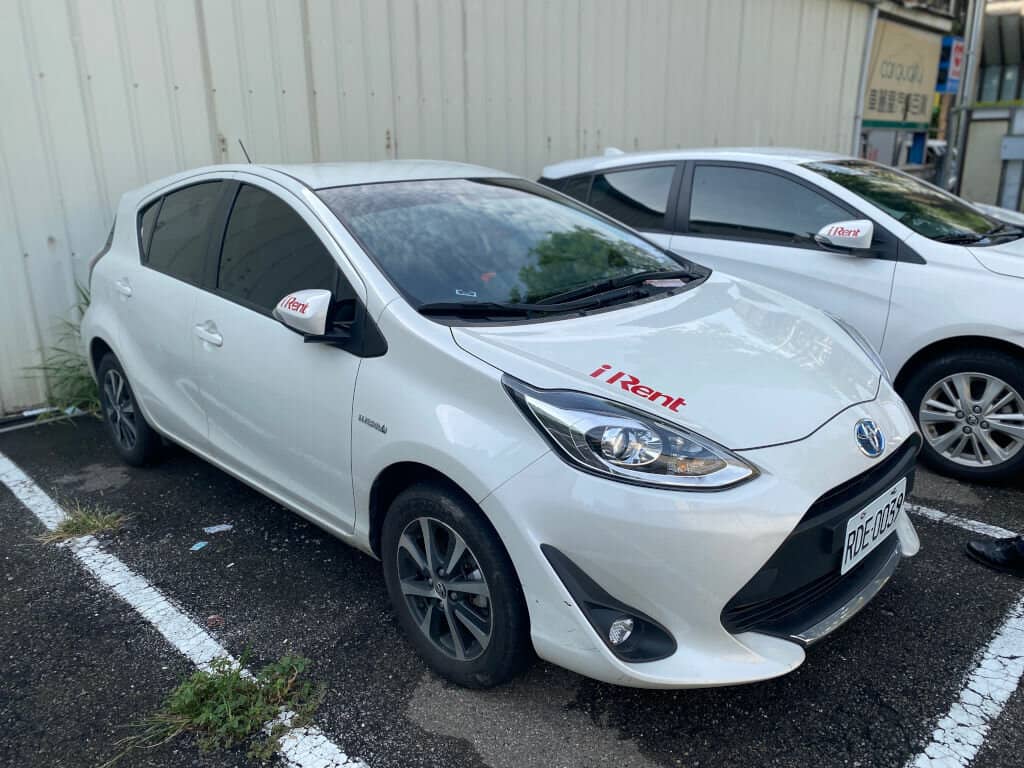
Online Reservations
Alternatively, you might prefer to rent a car online before your trip. This gives you the advantage of comparing rates, reading customer reviews, and securing a car that meets your specifications prior to your arrival. Websites such as Expedia, Kayak, or Rentalcars.com often offer deals and comprehensive information of various car rental companies.
There are definite pros and cons to consider with online car rental reservations. On the positive side, pre-booking ensures that you get the car you want at potentially lower rates, and it may include additional insurance coverage options. On the downside, it reduces flexibility as changes to your itinerary may result in cancellation or change fees. Furthermore, online images and descriptions may not always match the reality of the car you receive.
If opting for an online rental, it is recommended to use reputable platforms such as the aforementioned Kayak or Expedia, or to book directly with well-known car rental companies’ official websites to ensure reliability and customer support. Additionally, check if the rental includes GPS or offers add-on options for navigation systems in English, to assist with driving in Taiwan.
When renting a car in Taiwan, whether from an airport, train station, city center, or online, always consider the rental terms, insurance options, and customer reviews to ensure a hassle-free experience. Each option has its own set of advantages, so your choice should be guided by your individual travel plans and needs.
Is Renting a Car in Taiwan Safe?
General Road Conditions
Driving in Taiwan offers a varied experience comprised of both excellent highways and winding rural roads. The highways, particularly the freeways, are in top-notch condition, providing smooth transit across major parts of the island. They are well-signed in both Mandarin and English, which is reassuring for international visitors. Regular maintenance and clearly marked lanes make long-distance travel on Taiwanese highways a comfortable and safe endeavor.
As for the country roads, they are generally in good shape, though narrower and with more curves than the highways. These rural routes give way to stunning landscapes but require careful navigation due to occasional blind spots and a mixture of scooters, bicycles, and slow-moving trucks. Throughout Taiwan, road safety measures are taken seriously, with guardrails and signposts along mountainous routes to aid drivers in less-than-ideal weather conditions.
Driving Behavior in Taiwan
Taiwanese drivers are known for being assertive and, at times, quite aggressive, especially in the bustling city centers. Traffic laws are adhered to moderately well, but it’s not uncommon to witness scooters zipping between lanes or cars making sudden turns without much warning. As a foreigner driving in Taiwan, it’s crucial to remain vigilant and defensive when navigating the traffic.
In small villages, the pace of life translates into calmer driving conditions. However, roads can be narrow and shared with a variety of vehicles, including farm equipment, so patience and careful driving are always recommended. Always be prepared for the unexpected, such as an oncoming scooter or pedestrians crossing the road.
City and Traffic Management
Exploring city centers like Taipei or Kaohsiung by car can be challenging due to congested streets and scarce parking. However, these areas benefit from a consistent layout and well-planned infrastructure, making them manageable for those who are confident behind the wheel. Taiwanese cities have advanced traffic management systems in place, such as monitored traffic lights and clear road signage, which enhance safety and flow.
Parking rules are strictly enforced in urban areas, so it is important to park in designated areas or parking buildings. While driving in the city may be safe from an infrastructure standpoint, the high traffic density does require a heightened sense of awareness and an ability to respond swiftly to the stop-and-start nature of urban driving.
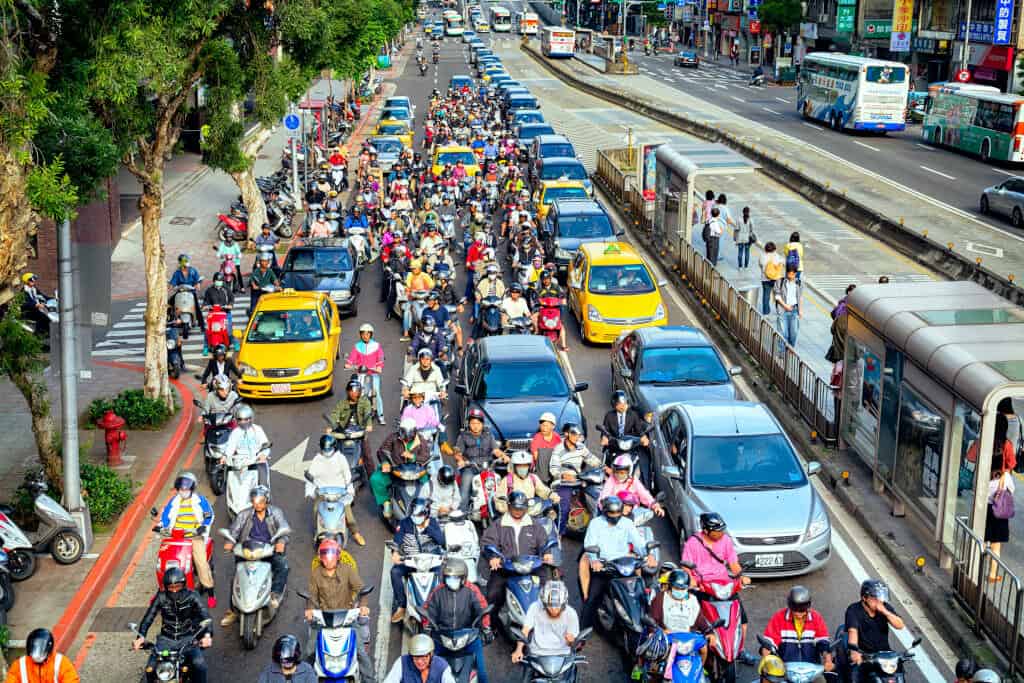
Overall, renting a car and driving in Taiwan is safe when approached with caution, an understanding of local driving customs, and a respect for the rules of the road. Whether winding through mountainous terrain or navigating the energetic cities, driving can be a rewarding way to experience the diversity of Taiwan’s landscapes and culture.
Is Renting a Car in Taiwan Expensive?
Renting a car in Taiwan can be an appealing option for travelers wanting the freedom to explore the island at their own pace. However, several costs associated with this convenience need to be considered to gauge how expensive it can be.
Car Rental Prices
The cost of renting a car in Taiwan largely depends on the type of vehicle you choose and the rental company. On average, you can expect to pay anywhere from NT$1,500 to NT$3,000 per day for a standard sedan. However, prices can go up for SUVs and premium models. Additionally, if you require an English GPS system, this could add extra fees to your rental.
Toll Roads
Taiwan has a well-developed network of toll roads, known as freeways, which can save you a lot of time on long distances. The fees vary depending on the distance traveled but the average cost is about NT$1.2 per kilometer. Tolls are collected electronically via an E-Tag system, so make sure your rental car is equipped with one and that you understand how the charges will be applied to your account.
Fuel Costs
Fuel costs are another factor to take into account when calculating the cost of renting a car in Taiwan. Gasoline prices fluctuate but tend to hover around NT$30 per liter. Diesel is slightly cheaper than gasoline. Depending on your travel distance and vehicle’s fuel efficiency, this could significantly impact your budget.
It’s essential to note that while these are example costs, prices can vary based on economic changes, the time of year, or the specific arrangements with your rental company. It’s always a good idea to do a thorough cost comparison and check for any hidden fees before making a final decision on renting a car in Taiwan.
Renting Automatic Cars in Taiwan
Why Choose an Automatic?
Traveling through Taiwan can be an exciting adventure, with bustling cities and scenic landscapes. Renting a car can afford you the freedom to explore at your own pace. However, it’s important to consider the kind of vehicle you’ll be comfortable driving, especially in a foreign country with different traffic laws and road etiquette. One of the strongest cases for renting an automatic car in Taiwan lies in the ease of handling. Especially for those not accustomed to the often overwhelming city traffic and the winding mountain roads, an automatic transmission can make the driving experience less daunting.
Automatic cars can also be a blessing for drivers not used to the left-hand driving system prevalent in Taiwan. Without the need to manage gear changes, you can focus more on navigating safely. This is especially helpful for travelers who are more accustomed to driving in countries where right-hand drive is the norm.
Perfect for Novice Drivers
If you’re not an experienced driver, or perhaps if it’s been a while since you’ve driven a manual vehicle, an automatic car takes the pressure off. You won’t have to worry about stalling the vehicle during stop-and-go traffic or on steep inclines – situations that are fairly common in Taiwan’s varied terrain.
Scarcity of Automatic Rentals
In Taiwan, as in many Asian countries, manual transmission vehicles tend to dominate the rental market. Automatic cars are comparatively less common, and as such, they are often in high demand. Given their popularity among tourists and even locals who prefer a more relaxed driving experience, automatic vehicles can sell out quickly.
Book in Advance
Given that automatic cars are not as ubiquitous in Taiwan’s rental fleets, securing one requires forethought. If you’re not comfortable with a manual stick shift, it’s imperative to reserve an automatic car well in advance. Last-minute bookings can be a gamble, and there’s a high chance that you won’t get the type of vehicle you’re comfortable with if you delay.
By planning ahead and booking an automatic car for your Taiwan trip, you can ensure that your driving experience is comfortable and stress-free, allowing you to focus more on the beauty and excitement that Taiwan has to offer.
Do I Need Air Conditioning
Renting a car in Taiwan can be an excellent way to explore the island at your own pace. Whether or not you need air conditioning in your rental car will largely depend on the time of year you are visiting and your personal comfort preferences.
Pros of Using Air Conditioning
Comfort: Taiwan’s climate can be very humid and hot, especially during the summer months. Air conditioning can make your drives much more comfortable and help you stay cool and refreshed.
Health: For individuals sensitive to heat or with certain health conditions, air conditioning can be crucial to prevent heat exhaustion and other heat-related health issues.
Air Quality: The air con helps to filter out pollutants and provides a respite from the outdoor air, which, in urban areas, can sometimes be of poor quality due to traffic and industrial activity.
Cons of Using Air Conditioning
Costs: Choosing a rental with air conditioning might cost a bit more. Also, using it consistently increases fuel consumption, leading to higher expenses for gas.
Environmental Impact: More fuel consumption translates to a larger carbon footprint. If you are environmentally conscious, you may want to limit your use of air conditioning.
Authentic Experience: Some travelers prefer to experience the country as the locals do, many of whom may not regularly use air conditioning in their vehicles.
Ultimately, whether you choose to have air conditioning in your rental car while in Taiwan will depend on balancing your need for comfort with your desire for economy and authenticity. During the winter months or in higher elevation areas, you may find the outside air perfectly pleasant, but for most travelers, the option of air conditioning provides a welcome relief from Taiwan’s heat and humidity.
Taiwan Driving Etiquette
Understanding the local driving etiquette is essential when navigating the streets of Taiwan. Taiwanese roads are vibrant and bustling, reflecting the island’s energetic lifestyle. Comprehending the subtleties will enhance your driving experience and keep you in good stead with the locals.
Respect for Scooters and Motorcycles
One of the first things you’ll notice is the sheer number of scooters and motorcycles. They are a primary mode of transport across Taiwan, and as such, car drivers must be vigilant and courteous to riders. Whether you’re making turns, changing lanes, or stopping, always check for these two-wheeled vehicles as they tend to weave through traffic with ease and sometimes, unpredictability.
Use of the Horn
In some countries, using the car horn can be seen as a sign of aggression. However, in Taiwan, it’s a common and accepted form of communication on the road. Drivers often use short beeps to signal their presence, especially when overtaking or merging. It’s more a heads-up than a rebuke, so don’t be startled or take it personally if another driver gives you a friendly honk.
Pedestrian Crossings and Right of Way
When approaching pedestrian crossings, be prepared to yield to walkers. Though this is a rule easily overlooked by some local drivers, acknowledging pedestrians is considered polite road etiquette. Additionally, the concept of ‘right of way’ isn’t always clear-cut. While traffic lights and signs should be adhered to, sometimes assertiveness is necessary, especially in busy city intersections or when entering roundabouts. Use your judgment, and proceed with caution.
Patience is a Virtue
With high population density and limited space, Taiwan’s roads can be congested, and traffic jams are common, particularly in urban areas. During rush hours, patience becomes an essential part of driving etiquette. Local drivers expect a certain level of equanimity from their fellow road users, so maintaining a calm demeanor, even in standstill traffic, is appreciated.
Flexibility Over Strict Adherence
While traffic rules exist, some degree of flexibility is practiced by local drivers. Don’t be surprised to see scooters sneaking through red lights when no traffic is coming or cars straddling lanes. As a foreigner, it’s wise to stick to the rules while being aware of the local driving style and ready to adapt when necessary to blend seamlessly into the traffic flow.
Lastly, when driving in Taiwan, a defensive and observant approach goes a long way. Understanding that you’re sharing the road with a mix of cars, scooters, pedestrians, and sometimes even the occasional street vendor, will equip you to navigate Taiwan’s dynamic streets with confidence and respectful understanding.
Fuel and Rest Stops
When driving in Taiwan, it’s essential to have a clear understanding of the fuel types available at petrol or gas stations and the nuances of using rest stops effectively. Navigating the refueling process in a new country can be daunting, but with a little knowledge, it can be a smooth part of your travel experience.
Understanding Fuel Types in Taiwan
In Taiwan, petrol stations offer several types of fuel, primarily “Unleaded 95” and “Unleaded 98”, with these numbers referring to the octane rating. Diesel is also available, commonly used by trucks and some larger vehicles. Less frequently, you might come across “Super Diesel”, which is a higher-quality diesel. It’s worth noting that the usage of leaded gasoline has been phased out, in line with global environmental standards.
One critical thing to remember is to check the type of fuel your rental car requires. This detail is usually specified in the car’s manual, inside the fuel door, or on the cap of the fuel filler. Using the incorrect type of fuel can lead to engine damage or impacts on performance and emissions, so take a moment to ensure you’re filling up with the right type.
Locating Fuel Stations in Taiwan
Fuel stations in Taiwan are reasonably easy to find, especially in urban areas and along major highways. Although they may be less frequent in rural or mountainous regions, planning your route in advance should help you identify suitable spots to refuel. Many fuel stations in Taiwan are full-service, meaning that attendants will pump your gas for you. They often clean your windshields and may check your oil if requested. Just drive up to the pump, specify how much fuel you need or simply ask to fill it up, and the attendants will take care of the rest.
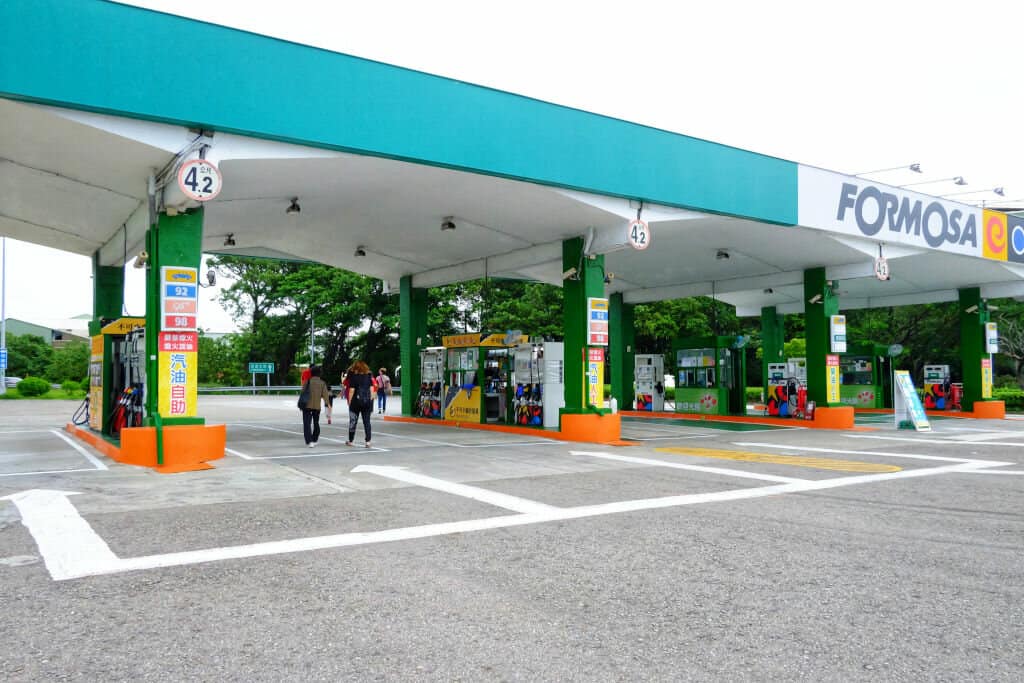
Additional Services at Fuel Stations
Most Taiwanese petrol stations offer more than just fuel. You can usually find air pumps to check your tire pressure, water stations for topping off your radiator, and sometimes even vacuum cleaners to spruce up the interior of the vehicle. Additionally, restrooms and small convenience stores are common, allowing travelers to stock up on snacks, drinks, and other essentials for the road.
When it comes to payment, most fuel stations in Taiwan accept credit cards, cash, and even electronic payment methods. It’s a good idea to have some local currency on hand as a backup, particularly when venturing into less urbanized areas where digital payments might not be as readily accepted.
Tips for Using Rest Stops
Taiwan’s highway rest stops are regular intervals and are typically clean and well-maintained. They offer a variety of services, including food courts with multiple options, ranging from quick snacks to full meals, clean restroom facilities, parking areas, and sometimes even shopping outlets. Rest stops can become busy during public holidays and weekends, so anticipate potential crowds and possible waiting times.
Rest stops are also an excellent place to gather local travel information as they often have maps and brochures about nearby attractions. If you’re traveling long distances, these stops can provide a much-needed break to stretch your legs and refresh before continuing your journey.
Ultimately, fueling up and using rest stops in Taiwan can be a seamless part of your trip with a bit of planning and knowledge. Ensure that you’re mindful of the type of fuel your rental car needs and enjoy the various conveniences that Taiwanese petrol stations and rest stops have to offer.
Parking
In Taiwan, parking can vary widely depending on where you are and what type of parking you’re looking for. Generally speaking, parking isn’t particularly cheap, especially in larger cities where space is at a premium. The cost of parking can range from a few tens of New Taiwan Dollars (NTD) per hour in suburban areas to a couple of hundred NTD per hour in the heart of metropolitan cities like Taipei.
Parking in Cities and Historic Towns
In urban areas and historic towns, parking is more structured and is typically available in the form of parking garages, parking lots, and designated areas within shopping malls or near tourist attractions. Due to the limited space and the high demand in these areas, parking fees are on the higher side. Many cities utilize electronic payment systems where you pay for the time you’ve parked upon exiting. During peak hours or special events, finding a vacant spot might be challenging, and it’s not uncommon for drivers to circle around multiple times in search of parking.
Parking Outside the Town/City and Using Public Transport
Outside the immediate urban center, you might encounter more open lot parking or street parking, which tends to be less expensive. Some commuters opt to park in these outer areas and then take public transportation into the city to save on costs and avoid the hassle of navigating through heavy traffic. Taiwan is known for its efficient public transportation network, so leveraging the MRT systems, buses, or trains can be a smart and economical choice when planning your travel within or between cities.
On-Street Parking
For on-street parking, spaces are often regulated by parking meters, so make sure to have change on hand or use mobile payment methods where available. The rates and rules for on-street parking can change depending on the time of day and the district. Some areas may only allow parking during off-peak hours to ease congestion, while others might permit parking with a resident permit. Always check the signage to avoid fines or towing.
Driving in Taiwanese Towns
Exploring the urban landscapes of Taiwan can be an exhilarating experience, but it comes with its own set of challenges and surprises. The streets of Taiwanese towns tend to be busy, with an intricate maze of roads that vary from wide avenues in newer areas to narrow lanes in older districts. As the space is often shared with scooters, which are one of the most popular modes of transportation in Taiwan, drivers need to stay vigilant at all times.
Understanding Local Traffic Patterns
One of the first things to note while driving in Taiwan’s towns is the local customs and traffic patterns. Rush hours can be particularly dense, and some scooter drivers have a tendency to maneuver unpredictably. Despite what may seem chaotic at first glance, there is an underlying order, and movement flows more smoothly as you become accustomed to the rhythm of local traffic.
Navigating with Technology
In terms of navigation, relying on traditional maps can be quite challenging, particularly for visitors who are not familiar with Chinese characters. This is where satellite navigation (sat nav) and GPS systems prove to be invaluable. Not only do they provide turn-by-turn directions in multiple languages, but they also help identify the fastest routes, taking into account the current traffic conditions.
The high density of roads and frequent absence of street signs in English can make even simple trips confusing. With the help of sat nav and GPS systems, you can mitigate the risk of getting lost and ensure that you reach your destination efficiently. These tools can swiftly recalibrate a route should you take a wrong turn or encounter an unexpected road closure.
Finding Hidden Gems
Another advantage of using modern navigation aids is the ability to discover hidden gems in Taiwanese towns. Whether you’re looking for a renowned local eatery, a historic temple tucked away in a quiet street, or a bustling night market, your sat nav can guide you to these points of interest with ease.
Moreover, GPS technology often comes with real-time updates, which means you can avoid areas with heavy traffic congestion or explore alternative routes to experience more of the town’s scenery. With these advanced tools, driving in Taiwanese towns becomes less daunting and more of an enjoyable adventure, allowing visitors to uncover the true spirit of the island’s urban culture.
Drive on the Right
For those familiar with driving on the left side of the road, the transition to driving on the right in Taiwan can be a unique challenge. The immediate difference requires a mental shift and constant awareness to adapt to the new traffic flow. The driver’s seat being on the left-hand side of the car, opposite to what left-side drivers are accustomed to, can take some getting used to.
Switching Sides
One critical aspect to consider when driving on the right for the first time is the positioning of the car in the lane. It’s natural to gravitate towards what feels like the middle of the lane from a left-side perspective, but this can lead to being too close to oncoming traffic. Staying centered may require regular reminders, particularly when making turns. Moreover, right-hand turns, instead of left, become the norm for turns across traffic, requiring an additional level of caution and adjustment of the usual perspective.
Roundabout Navigation
Roundabouts or traffic circles in Taiwan follow the same right-driving rules, but the approach can feel counterintuitive if you’re used to left-driving systems. In Taiwan, you’ll need to enter the roundabout to the right and proceed counterclockwise. Always check for cars already in the roundabout from the left before you enter, as they have the right of way.
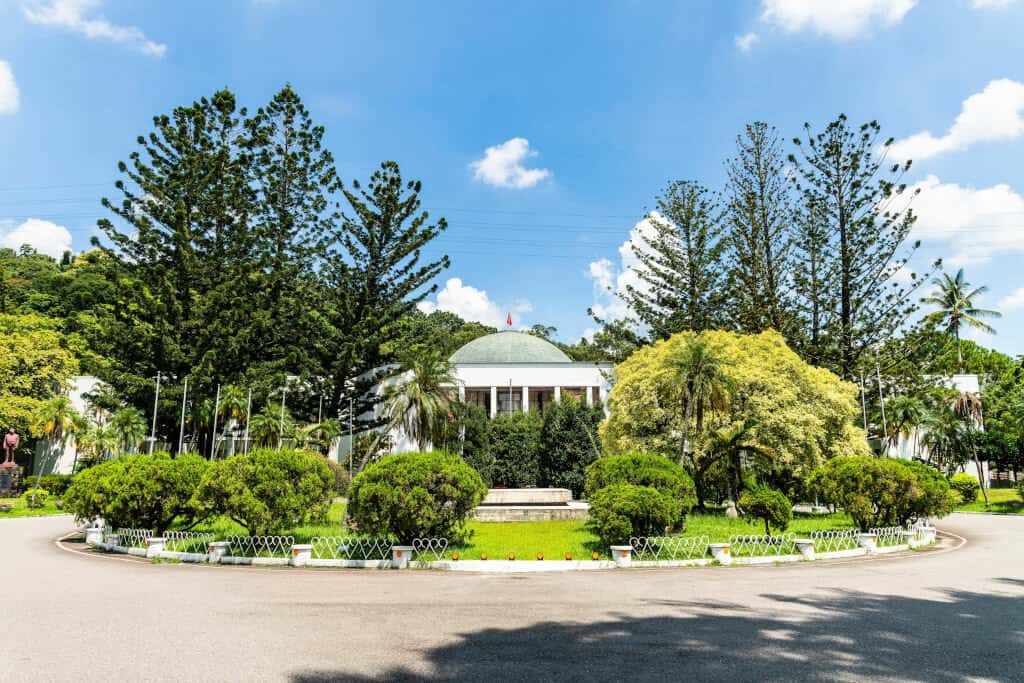
Intersection Alertness
Intersections are a hub for potential confusion. Traffic lights and pedestrian crossings may not be positioned where a left-side driver expects them to be. It’s crucial to be extra vigilant about traffic lights and signs, ensuring they correspond to your direction of travel. Additionally, pay close attention to road markings and be aware that drivers may not signal their intentions as clearly or as consistently as you’re used to.
Passing and Overtaking
Overtaking other vehicles requires retraining your instincts. On a multi-lane highway, remember that passing should now happen on the left, not the right. Similarly, slower traffic is expected to stay to the right, releasing the faster left lanes for passing vehicles. It’s imperative to check mirrors frequently and be aware of blind spots, which may be different from what you’re accustomed to.
Mirrored Movements
Even simple tasks such as using gear shifts and turn signals can be a source of error, as their positions in the vehicle are mirrored. Extra caution should be exercised to ensure that a signal is correctly communicated to other drivers. The wipers and indicator controls may be on the opposite side of the steering wheel to what you’re used to, increasing the chance of inadvertent mishaps.
Overall, the key to making a safe transition from driving on the left to driving on the right is mindfulness and a conscious effort to adapt to the new rules. With time and practice, the initial awkwardness gives way to a more confident driving experience on Taiwan’s busy roads.
Motorways in Taiwan
Taiwan’s motorways are a key part of its transportation infrastructure, connecting major cities across the island. In terms of driving experiences, the motorways in Taiwan are generally well-maintained, offering a smooth driving experience. Signage on these roads is available both in Mandarin and English, which makes navigation easier for international visitors. Though the motorways are designed for high-speed travel, congestion can be significant especially during peak hours and holidays, given the dense population on the island. For the most part, driving on Taiwan’s motorways can be described as efficient, provided one avoids the rush hours.
Major Motorways
The most prominent motorways in Taiwan include National Freeway 1, commonly known as the Sun Yat-sen Freeway, which runs from the northern city of Keelung through the capital Taipei, all the way down to Kaohsiung in the south. Essentially, it serves as the backbone of Taiwan’s trans-island transportation, linking the west coast’s key urban centers.
Another major motorway is National Freeway 3, also known as the Formosa Freeway, which stretches from Taipei in the north to Pingtung in the south. Though it runs parallel to National Freeway 1 for most of its route, it veers to the east and traverses more mountainous terrain, providing an alternative route to travel the length of the island. This route features impressive engineering, including tunnels and bridges, designed to tackle the challenging topography of Taiwan.
Coastal and Cross-Island Routes
National Freeway 5, extending from the Taipei metropolitan area to Yilan and Hualien on the east coast, is known for the Hsuehshan Tunnel, one of the longest road tunnels in the world. The scenic journey on this freeway provides commuters with a fascinating transition from urban landscapes to the rugged beauty of Taiwan’s less-populous east coast.
For those looking to traverse from west to east, the 88-kilometer-long National Freeway 6 takes travelers from Taichung to Wufeng and Puli, culminating near the famous Sun Moon Lake. The cross-island motorways like this one offer some of the most spectacular views and are quite an experience for visitors.
Overall, Taiwan’s motorways provide a fast and convenient way to travel around the island, linking major cities, industrial areas, and tourist destinations. The road infrastructure reflects Taiwan’s economic development and focus on connectivity, with continuous upgrades and expansions to accommodate the growing number of vehicles.
Tolls in Taiwan
Motorists in Taiwan can expect to encounter tolls when traveling on certain expressways and freeways, most notably the Formosa Freeway (National Freeway No. 1), which runs the length of the island. Tolls in Taiwan have transitioned from traditional toll booth collections to an electronic toll collection (ETC) system, ensuring that the process of paying tolls is more seamless and causes minimal disruption to traffic flow. This means that all tolls are collected electronically, and drivers should have an ETC transponder in their vehicles, which is scanned as they pass under toll gantries situated at various points along the highways.
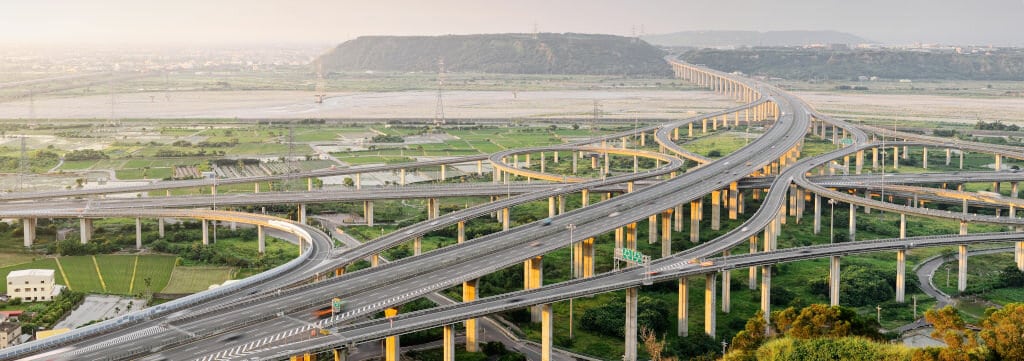
Electronic Toll Collection System
The ETC system is very convenient for motorists as it allows for non-stop toll collection at highway speeds. The system uses radio frequency identification (RFID) technology to automatically deduct the prescribed amount from the driver’s prepaid account or credit card linked to their ETC account. Visitors can rent a car that comes with an ETC transponder, or they can rent a transponder device separately to affix to their dashboard if using their own or a borrowed car.
Toll Costs
The cost of tolls varies depending on the distance traveled. Taiwan’s highways use a pay-per-distance system, which means that you pay for the exact distance you travel on a toll road. Rates are typically set at around NT$1.2 per kilometer, but they can vary based on vehicle size and time of day. During peak travel times, toll rates may be higher. To find the most up-to-date pricing, motorists can consult the Taiwan Area National Freeway Bureau for detailed information.
Avoiding Toll Roads
While it is possible to avoid using toll roads in Taiwan, doing so would generally mean significantly longer travel times and potentially more complex navigation through urban or rural roads. The tolled expressways are designed to be the fastest routes between major cities and destinations. If you are looking to avoid tolls completely, you can plan your route using non-toll roads, but be sure to allow extra time for your journey. Detailed maps and GPS systems often have options to avoid tolls when calculating routes.
Overall, Taiwan’s toll system is designed to be convenient and efficient, allowing motorists to enjoy smooth and uninterrupted travel across the island’s highways. The use of the ETC system has made it easier for drivers to manage toll payments without the need for cash transactions or waiting in lines at toll booths. For more information on ETC and tolls in Taiwan, visit the ETC Company site, which provides comprehensive guidance on how the system works, how to sign up, and how to manage your account.
Speed Limits in Taiwan
Taiwan offers a diverse driving experience, from bustling city streets to scenic coastal highways. The speed limits on the island are clearly marked and tailored to various road types to ensure safety. In urban areas, the general speed limit is typically set at 50 km/h. However, this can be lower in certain congested city zones or near schools, where the limit can drop to as low as 30 km/h.
Highways and Expressways
The crux of long-distance travel in Taiwan is via its extensive network of highways and expressways. On expressways, the speed limit usually ranges between 60 to 80 km/h. On the freeways, which are the equivalent of western highways, the speed limit can range from 100 km/h to 110 km/h, allowing for efficient cross-island travel.
Adjustments for Weather and Traffic Conditions
It’s important to note that speed limits in Taiwan are subject to change depending on weather conditions. During heavy rain or typhoon warnings, speed limits are typically reduced for safety reasons. Similarly, depending on the traffic congestion, speed recommendations might adjust to maintain a smooth flow of vehicles.
Speed Limit Signage and Enforcement
To know what speed you should be driving, pay close attention to the road signs. Taiwan uses international symbols, so the speed limit signs are recognizable: a red circle with a number indicating the maximum speed in kilometers per hour. Additionally, Taiwan has a robust system of speed cameras and regular police patrols to enforce these limits. Fines for speeding can be substantial and may increase with the amount by which the speed limit was exceeded.
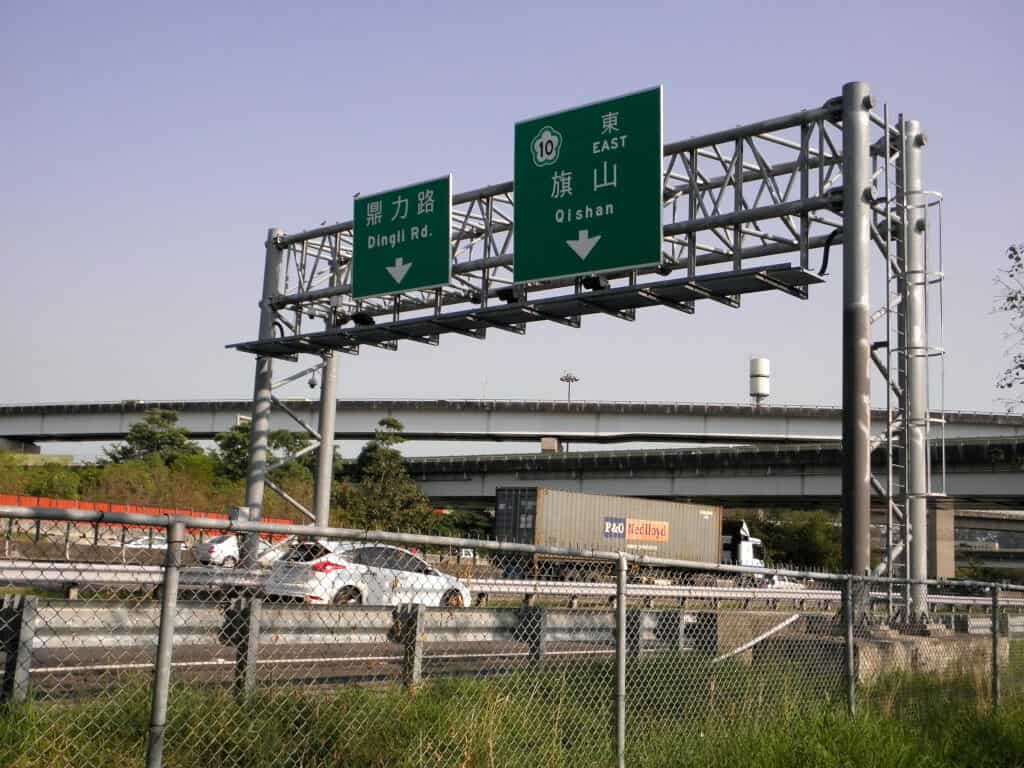
For the most accurate and up-to-date information on speed limits, it is advisable to consult the official resources. The Ministry of Transportation and Communications is the authoritative body for transportation regulations in Taiwan. You can also check the Institute of Transportation for specific details on speed limits and traffic laws.
Speeding Fines in Taiwan
Speeding fines in Taiwan are determined by how much you exceed the speed limit. The fines can range from NT$1,600 to NT$24,000, depending on the severity of the offense. The National Police Agency of Taiwan has detailed information about the fines and penalties for speeding, which can be accessed on their official website.
Speed Cameras Across the Island
Taiwan is known to have a robust system of speed cameras in place to enforce speed limits. These cameras are particularly common on highways, freeways, and certain major roads, ensuring that drivers adhere to the set speed limits. For more specific locations, the Directorate General of Highways provides a guide to the placement of these cameras as well as the various road regulations in force.
Police Speed Traps in Urban and Rural Areas
Aside from stationary speed cameras, the Taiwan police also set up mobile speed traps to catch speeding drivers. These traps are more frequently found on roads with a history of speeding incidents, often without much warning to the driver. Experiencing the efficiency of these mobile speed traps firsthand suggests that maintaining awareness of speed limits at all times while driving in Taiwan is critical.
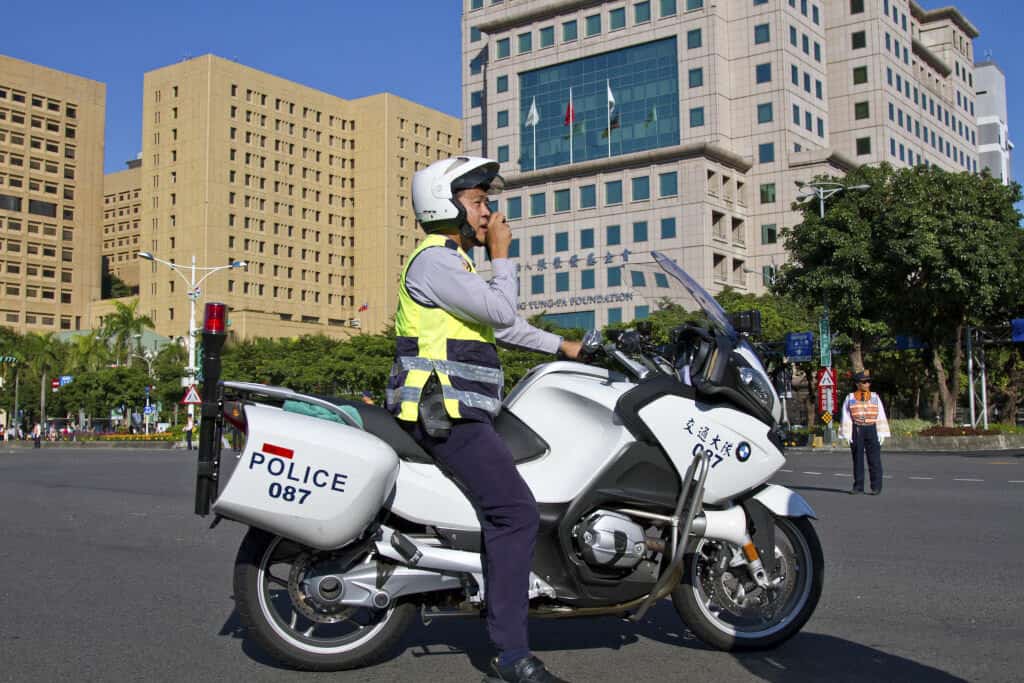
Additional Considerations When Driving in Taiwan
When driving in Taiwan, it’s crucial to be mindful of varying speed limits across different types of roads. Also, Taiwan experiences heavy rainfall and typhoons that can affect road conditions; thus, speed limits can vary with weather conditions to ensure road safety. Rental car companies and local signage provide this information, but it’s always good to double-check with the latest updates from the Central Weather Bureau.
It is also worth noting that rental cars are equipped with GPS systems that often alert drivers of upcoming cameras. This system allows you to adjust your speed accordingly to avoid fines. More importantly, the emphasis is always on safety, and adherence to speed limits is a crucial aspect of safe driving practices on the island.
Drive Times in Taiwan
Taiwan, an island nation known for its bustling cities, rugged mountains, and rich cultural history, is quite compact in comparison to many other countries. This makes driving between major cities, towns, and tourist attractions fairly manageable. Here’s a practical guide to understanding the drive times you might expect when traveling across Taiwan:
Inter-City Drive Times
- Taipei to Taichung: about 2 hours
- Taichung to Kaohsiung: approximately 2.5 hours
- Taipei to Tainan: around 4 hours
- Kaohsiung to Hualien: roughly 4.5 to 5 hours
- Tainan to Hualien: about 4.5 hours
From Cities to Tourist Attractions
- Taipei to Taroko Gorge: around 3.5 hours
- Kaohsiung to Kenting National Park: about 2 hours
- Taichung to Sun Moon Lake: approximately 1.5 hours
- Tainan to Alishan National Scenic Area: about 3 hours
- Hualien to Yushan National Park: around 3 hours
If you’re planning to visit Taiwan and drive on your own, it’s important to remember that these times can vary depending on traffic, weather conditions, and unexpected delays. For real-time traffic updates and more detailed travel planning, refer to the Taiwan Ministry of Transportation and Communications or use the helpful route planning features available from the Taiwan High-Speed Rail Corporation for an alternative high-speed train option between major cities.
Should you prefer public transportation, Taiwan offers excellent train services that connect most of the major cities and towns. For more information on train travel, check out the official website of the Taiwan Railways Administration.
Lastly, if you’re keen on exploring beyond the usual tourist spots and venture into more remote or less accessible areas, considering renting a car might be the way to go. Car rental agencies in Taiwan are plentiful and can provide you with the freedom to discover Taiwan at your own pace.
Car Seats for Children and Babies
When traveling to Taiwan with small children or babies, the laws around car seats are clear and strict, designed to ensure the safety of young passengers. In Taiwan, it is mandatory for all children under four years of age to be secured in child car seats when traveling in a vehicle. The local authorities, such as the Ministry of Transportation and Communications, provide comprehensive guidelines for parents and guardians to follow.
Categories Based on Age and Size
Child car seat regulations are categorized primarily by the age and size of the child:
- Infants (0-1 year old or under 10 kg): Should be placed in a rear-facing car seat.
- Toddlers (1-4 years old or 10-18 kg): Can transition to a forward-facing car seat with a harness.
- Young Children (over 4 years old or over 18 kg): Must use a booster seat until the seat belt fits properly without it, typically when they reach a height of 145 cm (4 feet 9 inches).
Renting vs. Bringing Your Own Car Seat
The decision between renting a car seat or bringing your own depends on convenience and cost. Renting a car seat with your vehicle in Taiwan can be incredibly straightforward; most car rental companies offer the option to add a child car seat to your booking for an additional fee. This eliminates the need to carry a bulky car seat through the airport, which can be particularly beneficial if you are already managing several pieces of luggage and managing young travelers.
However, costs can add up, especially for longer trips, and not all rental car seats may meet the personal comfort standards or familiarities that your child is accustomed to. For parents who are more comfortable with the quality and fit of their own car seat, bringing one from home could be preferable. Although it adds extra luggage, it ensures that you are using a product that meets your standards for safety and comfort. Additionally, most airlines allow you to check a car seat at no extra charge, which can make this option more cost-effective in the long run, provided you are willing to transport it.
Furthermore, familiarizing yourself with the installation process of the car seat — whether it’s your own or a rental — is crucial before you start your journey in Taiwan. Ensuring that the car seat is correctly fitted will offer peace of mind knowing that your child is as safe as possible during your travels.
Overall, when visiting Taiwan with children, safety comes first. Whether you choose to rent a car seat or bring your own, be sure to comply with the local laws and guidelines to ensure the protection and well-being of your little ones while on the road.
To know more about child car seat safety and regulations in Taiwan, you can visit the National Police Agency for the latest updates and resources.
Traffic
Taiwan’s traffic can be an exhilarating and, at times, white-knuckle experience for those not accustomed to the bustling rhythms of the island’s transportation framework. Here’s what you need to know if you plan to navigate the roads of this dynamic place.
Navigating the Streets of Cities
In cities like Taipei and Kaohsiung, the traffic is as lively as you’d expect from any major cosmopolitan area. The roads are typically congested during peak hours, with scooters weaving between cars and an intricate web of buses and taxis vie for space. Anyone driving here needs to be vigilant at all times, particularly as scooters tend to use the same space as larger vehicles, occasionally bypassing rules to take shortcuts. The use of honking is common but more a form of communication than an expression of frustration. On a positive note, the traffic signals are well-organized, and electronic panels inform drivers of traffic conditions ahead. In Taiwan’s cities, patience and a cool head are essential for any driver.
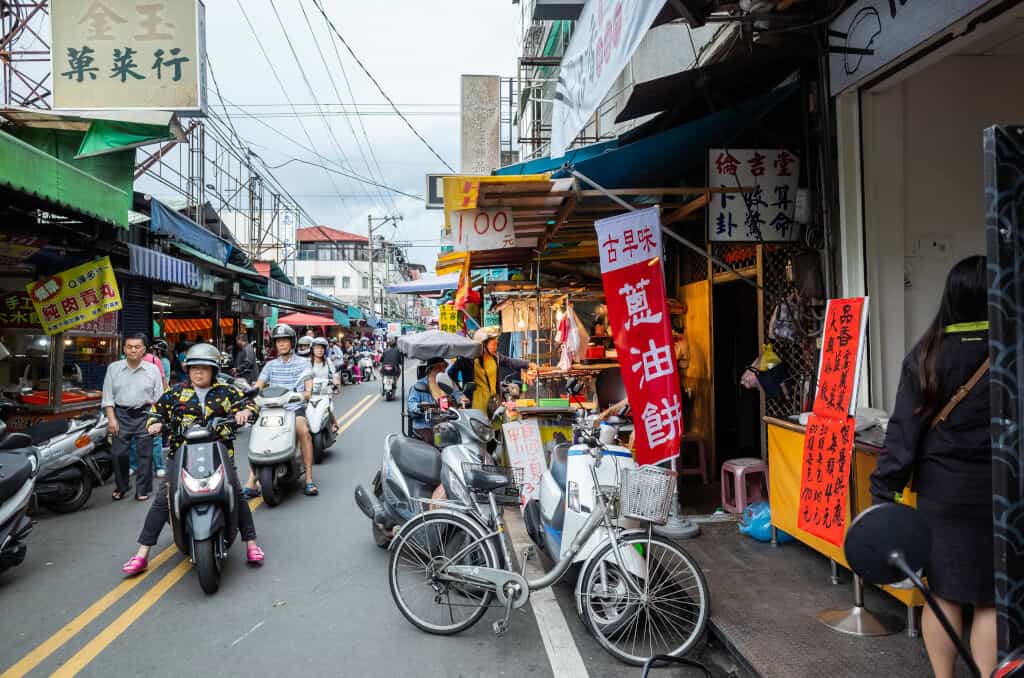
For up-to-date traffic information, the Ministry of Transportation and Communications of Taiwan offers useful resources for drivers to plan their trips, while information on public transport can be found on Public Transportation Office website.
On the Roads of Towns and Villages
Leaving the cities behind and venturing into the towns and villages of Taiwan brings about a change of pace. Traffic in these areas is generally less intense, but one must remain attentive. The roads are narrower and occasionally shared with pedestrians and cyclists, and you will often encounter scooters carrying more goods – and sometimes people – than seems possible. Rural traffic may also include the occasional farming vehicle, so be ready to encounter the unexpected. Street signage is usually clear, though not always as comprehensive as within the city.
When Journeying through small towns and villages, it’s crucial to be aware of local customs at four-way stops and roundabouts, which may be different from official rules. As in any country, it’s important to follow the local driving style to a reasonable degree to avoid mishaps.
For those who prefer to let someone else do the driving, Taiwan’s public transport system in towns is reliable and can be checked via local tourism information offices, often found online.
Expect the Unexpected
One aspect of driving in Taiwan that is remarkably consistent, whether in urban centers or rural outposts, is the need to expect the unexpected. It’s not uncommon to witness last-minute lane changes, scooters dashing out of hidden alleys, or the sudden appearance of a night market on what was an open road during the day. Therefore, an attentive, defensive driving style goes a long way towards ensuring safety on the roads of Taiwan.
Despite the challenges, navigating Taiwan by road can be a rewarding experience. The stunning views, cultural vibrancy, and the kindness of locals make the journey worthwhile. Just make sure to arm yourself with a good map or GPS system, and potentially more importantly, a relaxed attitude towards the road might be your best companion.
Top tips for renting a car in Taiwan
Taiwan is an amazing country with a beautiful blend of modern cities, traditional temples, and stunning natural landscapes. Renting a car can be a fantastic way to explore this island at your own pace. Based on my experiences, here are the top 5 tips to help ensure a smooth journey when hiring a car in Taiwan:
-
- Understand the Requirements
Before you can rent a car in Taiwan, you will need an international driving permit (IDP) in addition to your valid driver’s license from your home country. Ensure you get this sorted before heading to Taiwan as it is a requirement for all foreign drivers. For more information, check the Taiwan Ministry of Transportation and Communications.
-
- Choose the Right Vehicle
Be mindful of the car size when renting in Taiwan. If you’re planning to navigate through the bustling city streets, a smaller car may be more practical and easier to park. On the other hand, if you’re heading into mountainous areas, a vehicle with more power and stability might be needed. Always consider luggage space and passenger comfort as well.
-
- Get Familiar with Local Traffic Laws
While Taiwanese traffic laws are quite similar to those in Western countries, there are some local rules you should be aware of, such as restrictions on turning left at red lights, and the use of scooter lanes. Spend a little time familiarizing yourself with the local traffic laws to avoid any issues.
-
- Insurance is Key
Renters should always opt for comprehensive insurance coverage when renting a car in Taiwan. This can protect you from unforeseen incidents and avoid high out-of-pocket expenses in the event of an accident. Discuss insurance options with the rental company and consider third-party insurance for additional coverage.
-
- Plan for Navigation and Connectivity
Getting around Taiwan is much easier with a reliable GPS system. Ensure that your rental comes equipped with a GPS that has English language settings. Alternatively, consider using your smartphone with local applications such as Google Maps. Remember to either have an international data plan or rent a portable Wi-Fi device to stay connected on the go.
